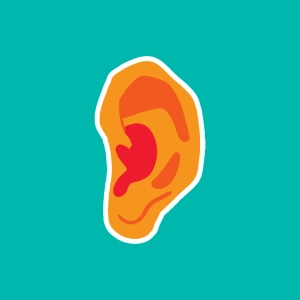 Video: The Ear
Video: The Ear
Sound propagates through air in the form of pressure waves.
In order for it to become information that is intelligible to the brain, these mechanical waves must be converted to electrical signals, also known as nerve impulses.
(…)
The ear plays this role. Its complex structure shelters the auditory receptor.
(…)
Sound waves are captured and amplified by the Pinna, with its cone-like shape. (…) and are then guided to the Tympanum, or ear drum, by the auditory canal.
(…)
This ensemble forms an air-filled cavity which is open to the exterior.
It is the Outer Ear.
(…)
The Typanum is a small, flexible membrane that reacts to pressure variations in sound waves.
The vibrations are transferred to the tiny bones located in the Middle Ear.
This cavity is open to the throat, via the Eustachian Tubes, which enable the balancing of pressure.
(…)
The bones of the Middle Ear are the three smallest bones in the human body: the hammer is attached to the Tympanum. Its vibrations are transferred to the anvil, then to the stirrup, which plays the role of a piston that compresses the liquid inside the Inner Ear.
(…)
The Cochlea is the organ of auditory perception.
Spread over its base, more than 15000 ciliated nerve cells detect vibrations in the liquid.
(…)
They then generate the nerve impulses, which are carried to the brain by the Auditory Nerve.
(…)
This remarkable system is nonetheless fragile. Sounds that are too loud can irreversibly damage our hearing. Any anomaly in the transmission of sound between the Outer and Inner Ears, or a problem of interpretation on the part of the brain, can result in partial or total deafness.
